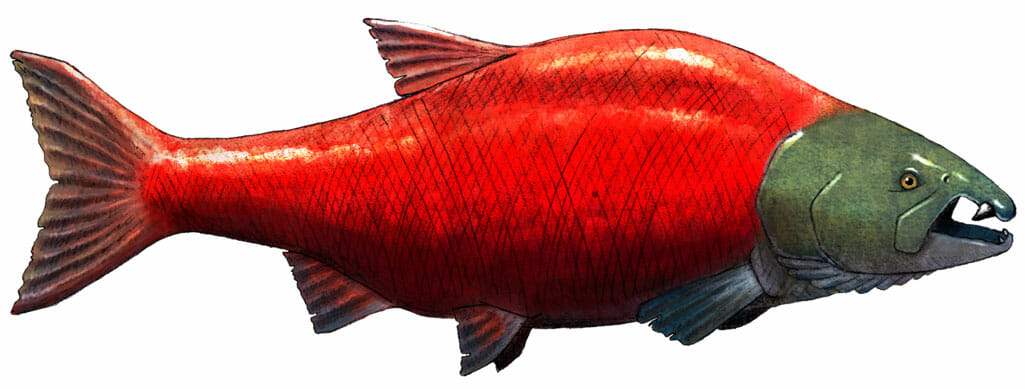While it’s still very possible to hook into a bestial chinook salmon in Pacific waters—fish that can grow upwards of 50 pounds or more—imagine what it might be like to connect with a salmon that’s 9 feet long and sports inch-long spiked teeth and weighs upwards of 400 pounds.
Between 5 and 11 million years ago, these giant salmon finned the waters of the cold Pacific and spawned in streams on the west coasts of the U.S. and Canada. But, despite the teeth, scientists believe these fish were filter feeders. Nevertheless, I’m guessing the fight would be tremendous.
From pre-history to a sketchy history. Mining in the West has left behind scars in thousands of watersheds, putting in peril water quality and, of course, native fish. In Montana, state Rep. Nate McConnell of Missoula has introduced a bill requiring mining operations to be audited for safety every three years, and to require companies mining ore with sulfide mineralization to post bonds 150 percent of normal. Ore with sulfide mineralization poses the most risk when it comes to long-term acid mine drainage. The bill is opposed by the mining industry, of course, but, given mining’s often-toxic legacy on water and wildlife in the West, it’s a bill that would ensure mining companies are not only invested in retrieving minerals from the earth, but also in the cleanup and reclamation of mine sites.
And then there’s this. In 2015, Emily Roley of Tennessee piled all of her belongings into a 2006 Subaru and headed west to become a fly fishing guide. She works at Nick Streit’s Taos Fly Shop today, but her journey into fly fishing is an interesting one. Toley is one of an increasing number of women who have come to fly fishing and have found their passion. This spring, she’s headed with a group of female anglers to Patagonia to chase big trout and make a great story even better.
Toley has gone from a fine-art photography major to one of the most sought-after guides in the Southwest. Nicely done.
— Chris Hunt



